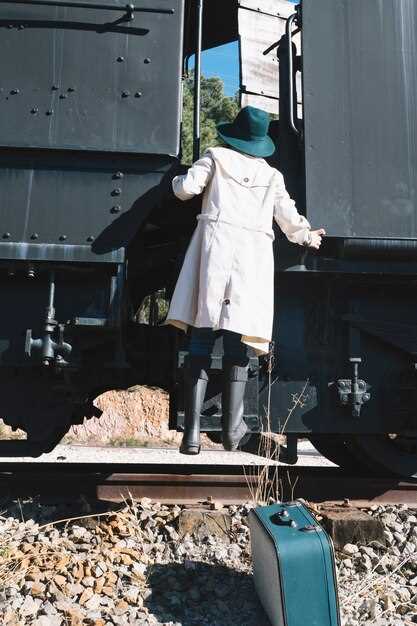
Restoring a Land Cruiser can be an exciting yet daunting task for enthusiasts and collectors alike. One of the key factors that can significantly impact the success of your restoration project is the way you purchase parts and materials. A bulk buying approach can not only save you money but also streamline the entire restoration process. By planning ahead and buying in larger quantities, you can ensure that you have everything you need at your fingertips when it’s time to dive into your project.
When it comes to restoration, understanding which parts are most essential to buy in bulk is crucial. Many restorers overlook the savings that can be found in bulk purchasing, often opting for smaller quantities that may lead to higher costs over time. Identifying opportunities for bulk purchases–such as gaskets, seals, and other frequently used components–allows you to maintain a consistent stock of necessary items, helping to avoid delays caused by waiting for shipments.
Additionally, it is vital to build relationships with suppliers who specialize in Land Cruiser parts. Forming these connections not only gives you access to potential discounts on bulk orders but also valuable advice on the best components for a successful restoration. By following these bulk buying tips, you’ll be better prepared to tackle your Land Cruiser project, bringing your vision to life while maintaining budget efficiency.
Identifying Key Parts for Bulk Purchases

When embarking on a restoration project for a Land Cruiser, making strategic purchases can significantly impact the overall outcome, especially when considering bulk buying options. Identifying the key parts that are essential for the restoration process is crucial for effective budgeting and project management.
First and foremost, create a comprehensive list of parts that need replacement or repairs. Focus on components that are critical for both safety and functionality, such as brakes, suspension systems, and engine components. These parts often experience wear and tear and can be expensive when purchased in smaller quantities.
Next, analyze the condition of your Land Cruiser to determine any additional parts that may require attention. Items like body panels, weatherstripping, and interior components can also be essential, especially if your goal is to achieve a complete restoration. Once you identify these key components, compare their availability and prices from different suppliers.
Utilizing online forums and communities can provide insights into which parts are commonly replaced during Land Cruiser restorations. Engaging with other enthusiasts can reveal common pitfalls and highlight frequently needed items, allowing you to bulk buy wisely.
Finally, consider long-term maintenance. While you may not need certain parts immediately, purchasing them in bulk can save money down the line. Items like filters, belts, and hoses are relatively inexpensive when bought in larger quantities and offer peace of mind for future repairs.
By carefully identifying key parts and assessing your purchasing strategy, you can significantly enhance your Land Cruiser restoration project, ensuring it is both cost-effective and successful.
Negotiating Bulk Discounts with Suppliers
When embarking on a Land Cruiser restoration project, the costs can quickly accumulate, making it essential to find ways to save money. One effective strategy is negotiating bulk discounts with suppliers. By purchasing parts in larger quantities, you can often secure significant savings that can be allocated to other aspects of your restoration.
Start by researching potential suppliers and understanding their pricing structures. Many companies are open to negotiating, especially if they see you as a repeat customer or a serious buyer. Prepare a list of the parts you need for your restoration and their estimated quantities. This will help you make a strong case when approaching suppliers.
Establish a rapport with your suppliers. Communication is key; express your passion for Land Cruiser restoration and your intent to create a long-term partnership. Suppliers are more likely to offer discounts to customers who show genuine interest in their products and reliability as a buyer.
When discussing bulk orders, highlight the advantages to the supplier, such as reduced handling costs and guaranteed sales. Be open about your needs and ask if they can provide a discount for purchasing multiple items at once. Don’t hesitate to request a price match if you find better offers elsewhere. This shows that you are informed and serious about getting the best deal.
Consider consolidating your purchases. If there are multiple restoration projects or clubs in your area, pooling resources with other enthusiasts can lead to even larger bulk orders, maximizing your negotiating power. Always compare prices among different suppliers before finalizing an agreement to ensure you receive the best possible deal.
Finally, be flexible with your payment terms. Some suppliers may be more willing to offer discounts if you can pay upfront or are willing to negotiate longer shipping times for better prices. By taking the time to negotiate bulk discounts, you can significantly reduce the overall cost of your restoration project and ensure a successful outcome for your beloved Land Cruiser.
Best Practices for Storing Bulk Purchased Parts

Proper storage of bulk purchased parts is crucial for successful restoration projects, especially for iconic vehicles like the Land Cruiser. Here are some effective practices to ensure that your parts remain in optimal condition until they are needed.
1. Organize by Category
When storing parts, group similar items together. Create categories based on function, such as engine components, electrical parts, or body panels. This organization not only makes it easier to find items when needed but also helps in inventory management.
2. Use Appropriate Containers
Choose containers that provide adequate protection against dust, moisture, and physical damage. Clear plastic bins with lids can be useful for visibility and easy access. For smaller parts, consider using compartmentalized organizers to prevent mixing or loss.
3. Label Everything
Clearly label all storage containers with the contents and, if applicable, the part numbers or descriptions. This practice saves time during the restoration process, allowing for quick identification of parts without unnecessary searches.
4. Control Environment
Store parts in a climate-controlled environment to prevent degradation. Temperature fluctuations and high humidity can lead to rust or deterioration of materials. Aim for a dry, cool area with stable conditions to maintain the integrity of your bulk purchases.
5. Create an Inventory System
Implement a simple inventory management system to keep track of what you have purchased. This can be as basic as a spreadsheet or a dedicated software program. Regularly update it when new items are added or when parts are used in the restoration process.
6. Rotate Stock
If you acquire multiple quantities of similar parts, practice the first-in, first-out (FIFO) approach to ensure older stock is used first. This minimizes the risk of parts becoming obsolete or damaged over time, preserving the value of your bulk purchase.
7. Perform Regular Checks
Schedule regular inspections of the stored parts to identify any potential issues. Check for signs of corrosion, damage, or pest infestations. Addressing these problems early can save parts from further deterioration and unnecessary costs in the future.
By following these best practices for storing bulk purchased parts, you will protect your investment and streamline the restoration process of your Land Cruiser. Proper management of components ensures that your project stays on track and that each part is ready for installation when the time comes.
